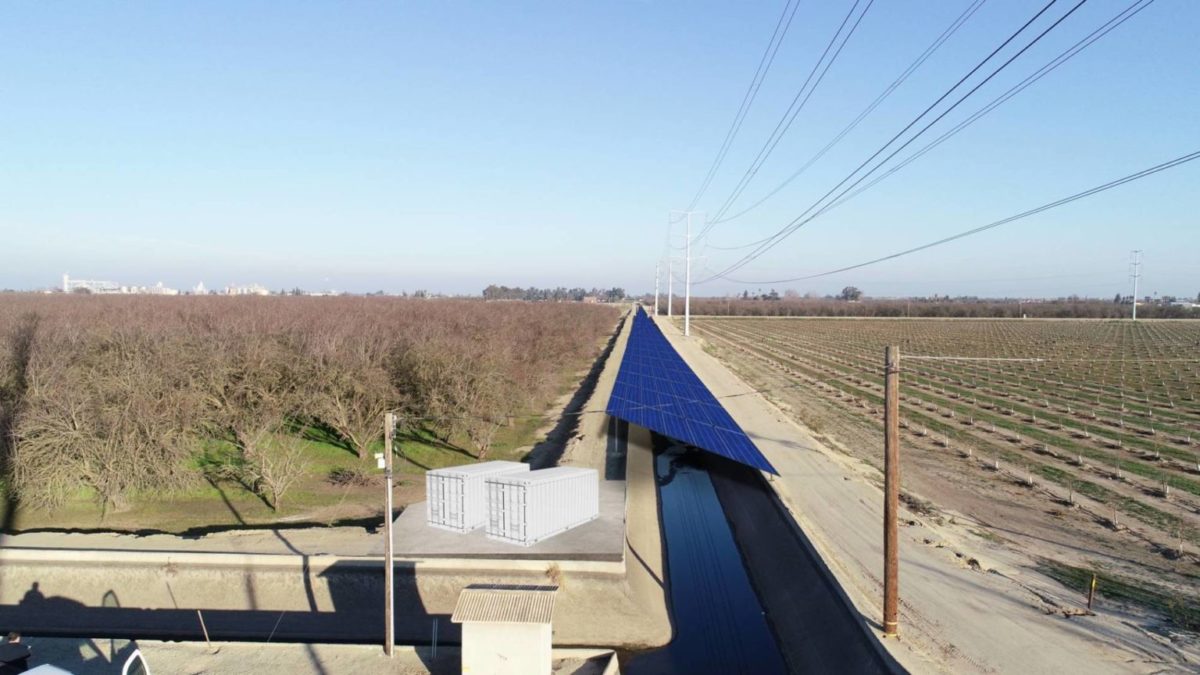From pv magazine USA
In February, pv magazine reported on Project Nexus, which planned to install solar panels over California canals. Now that project is about to move forward with, groundbreaking planned for the fall.
The Turlock Irrigation District (TID) is partnering with the Department of Water Resource (DWR), Solar AquaGrid, and the University of California, Merced in the project funded by the State of California. The project will include energy storage to study how storage facilities can support the local electric grid when solar generation is lowered due to cloud cover.
The concept of solar on California canals grew out of a 2021 study conducted at the University of California, Merced and University, Santa Cruz, which showed that covering the approximately 4,000 miles of public water delivery system infrastructure in California with solar panels can generate 13 GW of energy annually, equal to about one sixth of the state’s current installed capacity and about half the projected new capacity needed to meet the state’s goal of reducing greenhouse gas emissions 40% by 2030.
“Solar canals are an example of an energy-water nexus that offer multiple sustainability benefits. Using water canals for solar infrastructure conserves water while producing renewable electricity and avoids converting large tracts of land to solar development,” said Dr. Brandi L. McKuin, the lead author of the study.
The study suggests that 63 billion gallons of water could be saved annually by covering canals, which is enough to irrigate 50,000 acres of farmland or meet the water needs of more than 2 million residents. The project will show how covering canals reduces evaporation as well as possibly improve water quality and reduce vegetative growth.
“Research and common sense tell us that in an age of intensifying drought, it’s time to put a lid on evaporation,” said Jordan Harris, CEO of Solar AquaGrid. “Our initial study revealed mounting solar panels over open canals can result in significant water, energy, and cost savings when compared to ground-mounted solar systems, including added efficiency resulting from an exponential shading/cooling effect. Now is the chance to put that learning to the test.”
In addition to studying energy generation on canals as well as benefits to water levels and quality, the project offers an opportunity to study a variety of solar panels and inverters to see how they work when installed over or near the water. Various forms of energy storage will also be studied.
Project Nexus is expected to be complete in 2024 at multiple locations throughout the TID service territory.
This content is protected by copyright and may not be reused. If you want to cooperate with us and would like to reuse some of our content, please contact: editors@pv-magazine.com.




By submitting this form you agree to pv magazine using your data for the purposes of publishing your comment.
Your personal data will only be disclosed or otherwise transmitted to third parties for the purposes of spam filtering or if this is necessary for technical maintenance of the website. Any other transfer to third parties will not take place unless this is justified on the basis of applicable data protection regulations or if pv magazine is legally obliged to do so.
You may revoke this consent at any time with effect for the future, in which case your personal data will be deleted immediately. Otherwise, your data will be deleted if pv magazine has processed your request or the purpose of data storage is fulfilled.
Further information on data privacy can be found in our Data Protection Policy.